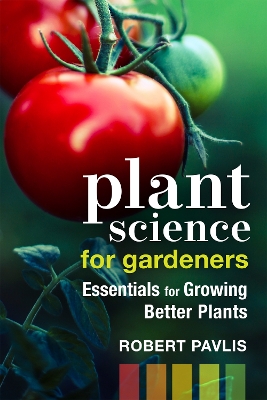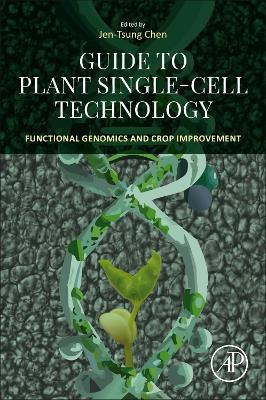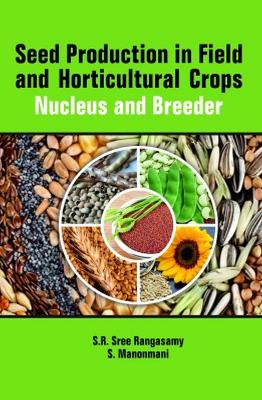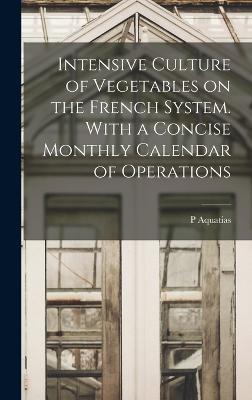Plant Science for Gardeners
 portes grátis
portes grátis
Plant Science for Gardeners
Essentials for Growing Better Plants
Pavlis, Robert
New Society Publishers
06/2022
224
Mole
Inglês
9780865719736
15 a 20 dias
354
Descrição não disponível.
Introduction
Introduction to Plant Science
Organization of the Book
Terms Used in This Book
1. Plant Basics
Cells
Xylem and Phloem
Photosynthesis
Plant Myth: Plants Raise the Oxygen Level in Homes
ATP and the Energy Cycle
Respiration
Meristematic Cells
Classification of Plants
2. Roots
Root Basics
Types of Roots
Plant Myth: Feeder Roots Are Located Under the Dripline
Effect of Gravity
Cut Roots and Side Roots
Plant Myth: Circulating Roots Continue to Circulate
Conditions That Affect Root Growth
Plant Myth: Transplant Solutions Grow Better Roots
Root Growth in Winter
Absorption of Water and Nutrients
Plant Myth: Is Soil pH Important?
Roots and Microbes
Plant Myth: Purchased Mycorrhizal Fungi Are Good for Plants
Plant Myth: Roots Grow Towards Water
The Rhizosphere
3. Stems
The Outer Structure of Stems
Internal Structure of Stems
Trichomes
Buds
How Stems Grow
The Importance of Photosynthesis
Underground Stems
Plant Myth: Plant Bulbs after the Ground Is Frozen
Plant Myth: Bearded Iris Should Be Planted with Rhizome Showing
4. Leaves
Leaf Structure
How Sun Affects Leaves
Why Are Some Leaves Red?
Plant Myth: Evergreen Needles and Oak Leaves Are Acidic
Functionality of Damaged Leaves
Natural Pesticides
Signaling Between Plants
Pest-Proof Leaves
Water Stress and Wilting Leaves
Leaf Abscission
Variegated Leaves
5. Flowers
Parts of a Flower
Pollination
What Causes Flowering?
Why Do Plants Not Flower?
Plant Myth: High Phosphate Grows More Blooms
Tough Love for Plants
Attracting Pollinators
Enjoy the Bracts
Dioecious and Monoecious Plants
6. Fruits and Seeds
What Is a Fruit?
The Importance of Fruit
Different Types of Fruits
Fruit Development
Seed Development
Suckering Tomato Plants
Seeds from Non-Flowering Plants
Soil Seed Bank
7. The Whole Plant
Life Cycle of Plants
Plant Dormancy
Movement of Water
Movement of Nutrients
Plant Myth: Leaves Can Be Used to ID Nutrient Deficiencies
Movement of Sugars
Seasonal Sharing of Resources
Overcoming Physical Damage
How Do Plants Get Taller?
Following the Sun
How Light Affects Plant Growth
Gravity
8. Woody Plants
What Are Woody Plants?
Structure of Woody Stems
Where Does Wood Come From?
Plant Myth: Newly Planted Trees Need to Be Staked
Storage of Sugars
Taproots vs. Fibrous Roots
Composition of Wood
Apical Dominance
Healing Damage
Plant Myth: Damage on Trees Should Be Painted
Conifers
9. Environmental Factors
Garden Hardiness Zones
Dealing with Cold
Protecting Plants from Cold
Dealing with Heat
Dealing with Water Extremes
Adaptability of Plants
How Climate Change Affects Gardens
10. Growing from Seeds
When Is Seed Mature?
The Seed Germination Process
The Mysterious Cotyledons
Why Do Seeds Stay Dormant?
Breaking Dormancy
Plant Myth: Seeds Can Have Double Dormancy
Seed Storage
Best Method for Starting Seeds Indoors
11. Selecting Seeds
Basic Genetics
Hybrids vs. Heirlooms
GMO Seeds
Days to Maturity
Buying Unusual Seeds
12. Vegetative Reproduction
Natural Vegetative Reproduction
Rooted Stems and Leaves
Artificial Vegetative Reproduction
Plant Myth: Homemade Rooting Hormones Work Well
Grafting
13. Plant Names
Why Use Botanical Names?
Naming Conventions
The Proper Way to Name Your Plants
Index
About the Author
Connect with Robert Pavlis
About New Society Publishers
Introduction to Plant Science
Organization of the Book
Terms Used in This Book
1. Plant Basics
Cells
Xylem and Phloem
Photosynthesis
Plant Myth: Plants Raise the Oxygen Level in Homes
ATP and the Energy Cycle
Respiration
Meristematic Cells
Classification of Plants
2. Roots
Root Basics
Types of Roots
Plant Myth: Feeder Roots Are Located Under the Dripline
Effect of Gravity
Cut Roots and Side Roots
Plant Myth: Circulating Roots Continue to Circulate
Conditions That Affect Root Growth
Plant Myth: Transplant Solutions Grow Better Roots
Root Growth in Winter
Absorption of Water and Nutrients
Plant Myth: Is Soil pH Important?
Roots and Microbes
Plant Myth: Purchased Mycorrhizal Fungi Are Good for Plants
Plant Myth: Roots Grow Towards Water
The Rhizosphere
3. Stems
The Outer Structure of Stems
Internal Structure of Stems
Trichomes
Buds
How Stems Grow
The Importance of Photosynthesis
Underground Stems
Plant Myth: Plant Bulbs after the Ground Is Frozen
Plant Myth: Bearded Iris Should Be Planted with Rhizome Showing
4. Leaves
Leaf Structure
How Sun Affects Leaves
Why Are Some Leaves Red?
Plant Myth: Evergreen Needles and Oak Leaves Are Acidic
Functionality of Damaged Leaves
Natural Pesticides
Signaling Between Plants
Pest-Proof Leaves
Water Stress and Wilting Leaves
Leaf Abscission
Variegated Leaves
5. Flowers
Parts of a Flower
Pollination
What Causes Flowering?
Why Do Plants Not Flower?
Plant Myth: High Phosphate Grows More Blooms
Tough Love for Plants
Attracting Pollinators
Enjoy the Bracts
Dioecious and Monoecious Plants
6. Fruits and Seeds
What Is a Fruit?
The Importance of Fruit
Different Types of Fruits
Fruit Development
Seed Development
Suckering Tomato Plants
Seeds from Non-Flowering Plants
Soil Seed Bank
7. The Whole Plant
Life Cycle of Plants
Plant Dormancy
Movement of Water
Movement of Nutrients
Plant Myth: Leaves Can Be Used to ID Nutrient Deficiencies
Movement of Sugars
Seasonal Sharing of Resources
Overcoming Physical Damage
How Do Plants Get Taller?
Following the Sun
How Light Affects Plant Growth
Gravity
8. Woody Plants
What Are Woody Plants?
Structure of Woody Stems
Where Does Wood Come From?
Plant Myth: Newly Planted Trees Need to Be Staked
Storage of Sugars
Taproots vs. Fibrous Roots
Composition of Wood
Apical Dominance
Healing Damage
Plant Myth: Damage on Trees Should Be Painted
Conifers
9. Environmental Factors
Garden Hardiness Zones
Dealing with Cold
Protecting Plants from Cold
Dealing with Heat
Dealing with Water Extremes
Adaptability of Plants
How Climate Change Affects Gardens
10. Growing from Seeds
When Is Seed Mature?
The Seed Germination Process
The Mysterious Cotyledons
Why Do Seeds Stay Dormant?
Breaking Dormancy
Plant Myth: Seeds Can Have Double Dormancy
Seed Storage
Best Method for Starting Seeds Indoors
11. Selecting Seeds
Basic Genetics
Hybrids vs. Heirlooms
GMO Seeds
Days to Maturity
Buying Unusual Seeds
12. Vegetative Reproduction
Natural Vegetative Reproduction
Rooted Stems and Leaves
Artificial Vegetative Reproduction
Plant Myth: Homemade Rooting Hormones Work Well
Grafting
13. Plant Names
Why Use Botanical Names?
Naming Conventions
The Proper Way to Name Your Plants
Index
About the Author
Connect with Robert Pavlis
About New Society Publishers
Este título pertence ao(s) assunto(s) indicados(s). Para ver outros títulos clique no assunto desejado.
Applied;;botany;Aspen;Biology;C/N ratio;fertilization;flowers;Gardening;Garden;Growing;growth;health;Home;Homesteading;horticulture;intelligent gardener;Market;master;Micro-farming;myths;nutrient;Optimized;organic;plants;pollination;Problem-solving;Propagation;roots;seeds;Soil;solutions;Steve Solomon;sustainable;techniques;Understanding;Vegetables
Introduction
Introduction to Plant Science
Organization of the Book
Terms Used in This Book
1. Plant Basics
Cells
Xylem and Phloem
Photosynthesis
Plant Myth: Plants Raise the Oxygen Level in Homes
ATP and the Energy Cycle
Respiration
Meristematic Cells
Classification of Plants
2. Roots
Root Basics
Types of Roots
Plant Myth: Feeder Roots Are Located Under the Dripline
Effect of Gravity
Cut Roots and Side Roots
Plant Myth: Circulating Roots Continue to Circulate
Conditions That Affect Root Growth
Plant Myth: Transplant Solutions Grow Better Roots
Root Growth in Winter
Absorption of Water and Nutrients
Plant Myth: Is Soil pH Important?
Roots and Microbes
Plant Myth: Purchased Mycorrhizal Fungi Are Good for Plants
Plant Myth: Roots Grow Towards Water
The Rhizosphere
3. Stems
The Outer Structure of Stems
Internal Structure of Stems
Trichomes
Buds
How Stems Grow
The Importance of Photosynthesis
Underground Stems
Plant Myth: Plant Bulbs after the Ground Is Frozen
Plant Myth: Bearded Iris Should Be Planted with Rhizome Showing
4. Leaves
Leaf Structure
How Sun Affects Leaves
Why Are Some Leaves Red?
Plant Myth: Evergreen Needles and Oak Leaves Are Acidic
Functionality of Damaged Leaves
Natural Pesticides
Signaling Between Plants
Pest-Proof Leaves
Water Stress and Wilting Leaves
Leaf Abscission
Variegated Leaves
5. Flowers
Parts of a Flower
Pollination
What Causes Flowering?
Why Do Plants Not Flower?
Plant Myth: High Phosphate Grows More Blooms
Tough Love for Plants
Attracting Pollinators
Enjoy the Bracts
Dioecious and Monoecious Plants
6. Fruits and Seeds
What Is a Fruit?
The Importance of Fruit
Different Types of Fruits
Fruit Development
Seed Development
Suckering Tomato Plants
Seeds from Non-Flowering Plants
Soil Seed Bank
7. The Whole Plant
Life Cycle of Plants
Plant Dormancy
Movement of Water
Movement of Nutrients
Plant Myth: Leaves Can Be Used to ID Nutrient Deficiencies
Movement of Sugars
Seasonal Sharing of Resources
Overcoming Physical Damage
How Do Plants Get Taller?
Following the Sun
How Light Affects Plant Growth
Gravity
8. Woody Plants
What Are Woody Plants?
Structure of Woody Stems
Where Does Wood Come From?
Plant Myth: Newly Planted Trees Need to Be Staked
Storage of Sugars
Taproots vs. Fibrous Roots
Composition of Wood
Apical Dominance
Healing Damage
Plant Myth: Damage on Trees Should Be Painted
Conifers
9. Environmental Factors
Garden Hardiness Zones
Dealing with Cold
Protecting Plants from Cold
Dealing with Heat
Dealing with Water Extremes
Adaptability of Plants
How Climate Change Affects Gardens
10. Growing from Seeds
When Is Seed Mature?
The Seed Germination Process
The Mysterious Cotyledons
Why Do Seeds Stay Dormant?
Breaking Dormancy
Plant Myth: Seeds Can Have Double Dormancy
Seed Storage
Best Method for Starting Seeds Indoors
11. Selecting Seeds
Basic Genetics
Hybrids vs. Heirlooms
GMO Seeds
Days to Maturity
Buying Unusual Seeds
12. Vegetative Reproduction
Natural Vegetative Reproduction
Rooted Stems and Leaves
Artificial Vegetative Reproduction
Plant Myth: Homemade Rooting Hormones Work Well
Grafting
13. Plant Names
Why Use Botanical Names?
Naming Conventions
The Proper Way to Name Your Plants
Index
About the Author
Connect with Robert Pavlis
About New Society Publishers
Introduction to Plant Science
Organization of the Book
Terms Used in This Book
1. Plant Basics
Cells
Xylem and Phloem
Photosynthesis
Plant Myth: Plants Raise the Oxygen Level in Homes
ATP and the Energy Cycle
Respiration
Meristematic Cells
Classification of Plants
2. Roots
Root Basics
Types of Roots
Plant Myth: Feeder Roots Are Located Under the Dripline
Effect of Gravity
Cut Roots and Side Roots
Plant Myth: Circulating Roots Continue to Circulate
Conditions That Affect Root Growth
Plant Myth: Transplant Solutions Grow Better Roots
Root Growth in Winter
Absorption of Water and Nutrients
Plant Myth: Is Soil pH Important?
Roots and Microbes
Plant Myth: Purchased Mycorrhizal Fungi Are Good for Plants
Plant Myth: Roots Grow Towards Water
The Rhizosphere
3. Stems
The Outer Structure of Stems
Internal Structure of Stems
Trichomes
Buds
How Stems Grow
The Importance of Photosynthesis
Underground Stems
Plant Myth: Plant Bulbs after the Ground Is Frozen
Plant Myth: Bearded Iris Should Be Planted with Rhizome Showing
4. Leaves
Leaf Structure
How Sun Affects Leaves
Why Are Some Leaves Red?
Plant Myth: Evergreen Needles and Oak Leaves Are Acidic
Functionality of Damaged Leaves
Natural Pesticides
Signaling Between Plants
Pest-Proof Leaves
Water Stress and Wilting Leaves
Leaf Abscission
Variegated Leaves
5. Flowers
Parts of a Flower
Pollination
What Causes Flowering?
Why Do Plants Not Flower?
Plant Myth: High Phosphate Grows More Blooms
Tough Love for Plants
Attracting Pollinators
Enjoy the Bracts
Dioecious and Monoecious Plants
6. Fruits and Seeds
What Is a Fruit?
The Importance of Fruit
Different Types of Fruits
Fruit Development
Seed Development
Suckering Tomato Plants
Seeds from Non-Flowering Plants
Soil Seed Bank
7. The Whole Plant
Life Cycle of Plants
Plant Dormancy
Movement of Water
Movement of Nutrients
Plant Myth: Leaves Can Be Used to ID Nutrient Deficiencies
Movement of Sugars
Seasonal Sharing of Resources
Overcoming Physical Damage
How Do Plants Get Taller?
Following the Sun
How Light Affects Plant Growth
Gravity
8. Woody Plants
What Are Woody Plants?
Structure of Woody Stems
Where Does Wood Come From?
Plant Myth: Newly Planted Trees Need to Be Staked
Storage of Sugars
Taproots vs. Fibrous Roots
Composition of Wood
Apical Dominance
Healing Damage
Plant Myth: Damage on Trees Should Be Painted
Conifers
9. Environmental Factors
Garden Hardiness Zones
Dealing with Cold
Protecting Plants from Cold
Dealing with Heat
Dealing with Water Extremes
Adaptability of Plants
How Climate Change Affects Gardens
10. Growing from Seeds
When Is Seed Mature?
The Seed Germination Process
The Mysterious Cotyledons
Why Do Seeds Stay Dormant?
Breaking Dormancy
Plant Myth: Seeds Can Have Double Dormancy
Seed Storage
Best Method for Starting Seeds Indoors
11. Selecting Seeds
Basic Genetics
Hybrids vs. Heirlooms
GMO Seeds
Days to Maturity
Buying Unusual Seeds
12. Vegetative Reproduction
Natural Vegetative Reproduction
Rooted Stems and Leaves
Artificial Vegetative Reproduction
Plant Myth: Homemade Rooting Hormones Work Well
Grafting
13. Plant Names
Why Use Botanical Names?
Naming Conventions
The Proper Way to Name Your Plants
Index
About the Author
Connect with Robert Pavlis
About New Society Publishers
Este título pertence ao(s) assunto(s) indicados(s). Para ver outros títulos clique no assunto desejado.
Applied;;botany;Aspen;Biology;C/N ratio;fertilization;flowers;Gardening;Garden;Growing;growth;health;Home;Homesteading;horticulture;intelligent gardener;Market;master;Micro-farming;myths;nutrient;Optimized;organic;plants;pollination;Problem-solving;Propagation;roots;seeds;Soil;solutions;Steve Solomon;sustainable;techniques;Understanding;Vegetables







